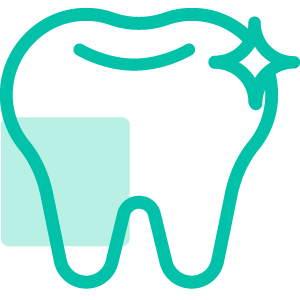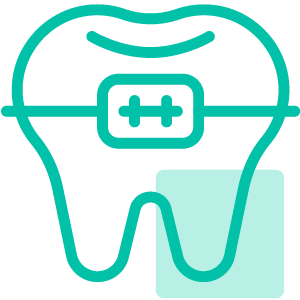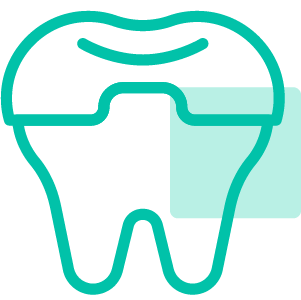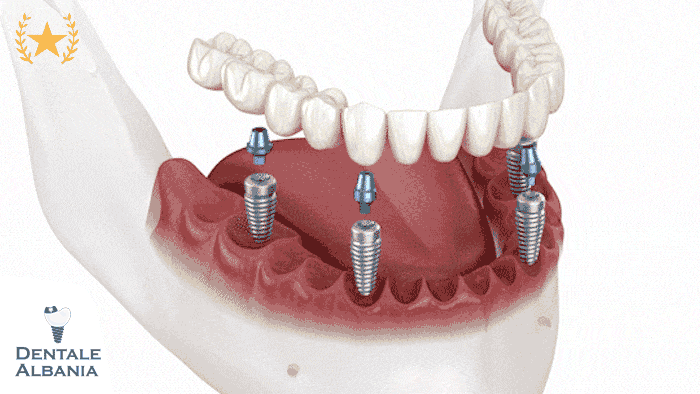Table of Contents
ToggleWhat Is Full Mouth Rehabilitation?
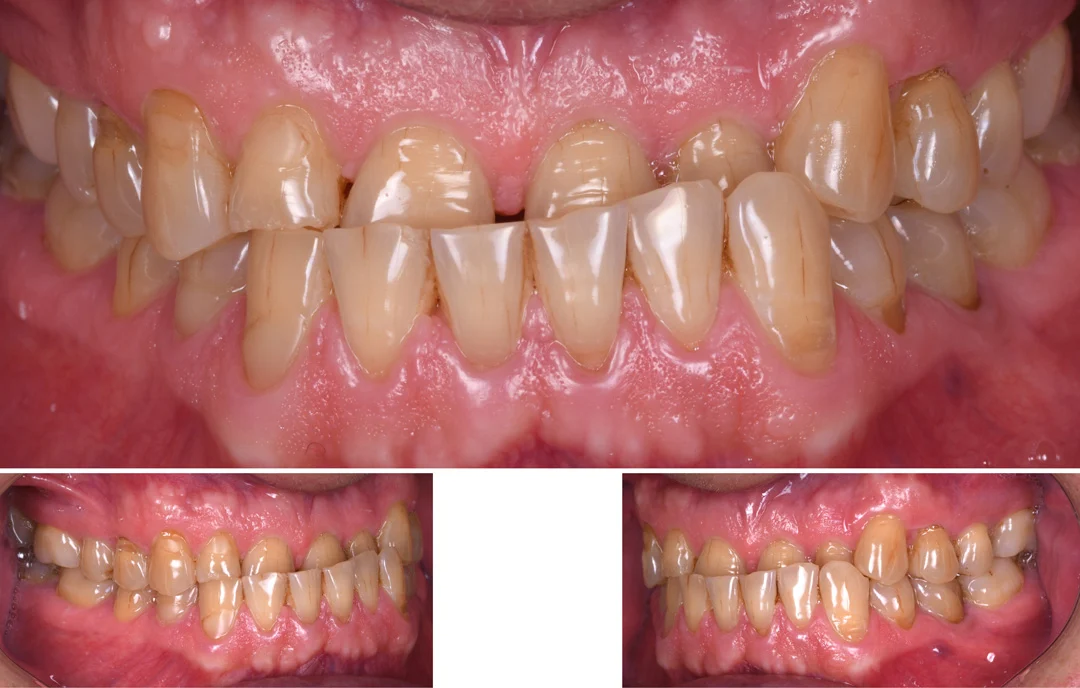
Full mouth rehabilitation, also known as full mouth reconstruction, is a comprehensive dental treatment approach that combines various procedures to restore the health, function, and appearance of the entire mouth. It’s not just a cosmetic upgrade—it’s a functional overhaul, often involving teeth, gums, jawbones, and bite alignment. This type of care is typically recommended for patients with widespread oral health issues such as worn down, broken, missing, or misaligned teeth.
The term might sound intimidating, but it simply refers to the strategic rebuilding or replacing of all teeth in the upper and lower jaws. It’s different from a “smile makeover,” which focuses primarily on aesthetics. While a smile makeover enhances appearance, full mouth rehabilitation focuses equally on restoring function—such as chewing and speaking—along with aesthetics and oral health.
This procedure is fully customized. For one patient, it may involve dental implants, crowns, and veneers, while for another, it could require root canal therapy, periodontal treatment, and bite correction. The goal is always the same: to give you a pain-free, functional, and beautiful smile that lasts.
A typical candidate for full mouth rehabilitation may have:
- Extensive tooth wear due to grinding (bruxism)
- Acid erosion from GERD or diet
- Multiple missing teeth
- Chronic jaw pain or TMJ disorders
- Advanced gum disease
- Dental trauma or injury
Dentists use modern imaging, 3D modeling, and bite analysis to create a personalized plan that often involves collaboration between different specialists—prosthodontists, periodontists, orthodontists, and oral surgeons.
In essence, full mouth rehabilitation is about reclaiming your oral health and quality of life. It’s not just dental work—it’s a transformative journey toward a healthier, more confident you.
What Does a Full Mouth Rehabilitation Consist Of?
Full mouth rehabilitation isn’t a single procedure—it’s a carefully planned series of treatments that work together to completely restore the functionality, health, and aesthetics of the mouth. This treatment is customized for each patient, depending on the condition of their teeth, gums, bite, and overall oral health. The goal is to create a stable, pain-free, and long-lasting dental structure that supports a healthy lifestyle.
Step-by-Step Treatment Process
- Initial Consultation & Examination: This involves a comprehensive evaluation by a dentist or prosthodontist. They’ll perform a clinical assessment, take X-rays, impressions, and possibly 3D scans to understand the full extent of damage or tooth loss.
- Treatment Planning: A detailed, multi-phase treatment plan is developed. It may involve different specialists such as periodontists, orthodontists, endodontists, and implantologists.
- Stabilization Phase: This phase may include deep cleanings, treatment of gum disease, temporary restorations, or splints to stabilize bite issues before moving forward with restorations.
- Restorative and Surgical Procedures: Depending on your needs, this can include fillings, crowns, veneers, bridges, dental implants, and even bone grafting or soft tissue surgery.
- Final Adjustments and Monitoring: After placing final restorations, your dentist will monitor function, aesthetics, and bite alignment over time. Adjustments are made to ensure long-term comfort and performance.
️ Common Procedures Involved
- Crowns & Bridges: To rebuild and protect damaged or missing teeth.
- Veneers: Thin shells used to cover the front of teeth for cosmetic enhancement.
- Inlays & Onlays: Conservative restorations for damaged teeth that do not require full crowns.
- Dental Implants: Used to replace one or more missing teeth permanently.
- Periodontal Treatments: Deep cleaning and gum surgery to restore gum health.
- Orthodontics: Braces or clear aligners to correct bite alignment before restorations.
Full vs Partial Reconstructions
It’s important to distinguish between full and partial mouth reconstructions. Full mouth rehabilitation involves most or all teeth in the upper and lower jaws, usually due to widespread damage or dysfunction. Partial rehabilitation may focus on a specific area, such as the posterior teeth or upper arch only.
Regardless of the scope, every rehabilitation is centered on restoring your ability to chew, speak, smile confidently, and live free of oral discomfort.
What Kind of Procedures Are Needed in Full Mouth Rehabilitation?
A full mouth rehabilitation often involves a combination of multiple dental procedures, tailored to the specific needs of each patient. These procedures work together to restore oral health, function, and appearance. The exact treatment mix depends on the condition of the teeth, gums, bone, and bite, as well as the patient’s goals, budget, and timeline.
Common Procedures and When They’re Used
- Dental Crowns:
Used to restore damaged, cracked, or worn teeth. Crowns cover the entire tooth surface and are ideal for protecting teeth that have undergone root canals or have significant decay. - Porcelain Veneers:
Thin custom shells that cover the front of teeth to improve their shape, color, and size. Veneers are often used for aesthetic enhancements in the smile zone when teeth are structurally sound. - Dental Bridges:
Replace one or more missing teeth using surrounding natural teeth or implants as anchors. Ideal when a few adjacent teeth are missing and the neighboring teeth need restoration. - Dental Implants:
Titanium or zirconia posts surgically placed into the jawbone to replace missing tooth roots. Implants can support crowns, bridges, or full dentures and are considered the gold standard for tooth replacement. - Inlays and Onlays:
Indirect restorations used for moderate decay or damage. Inlays fit within the cusps of a tooth; onlays cover one or more cusps, providing more protection than fillings but less coverage than crowns. - Root Canal Therapy:
Required when the pulp (nerve tissue) of the tooth is infected. Often necessary before placing a crown on a severely decayed or abscessed tooth. - Gum Treatments:
Scaling and root planing or gum surgery may be needed if there’s periodontal disease. Healthy gums are essential to support any restorations placed during the rehabilitation. - Orthodontics or Aligners:
Corrects misaligned bites or crowded teeth before restorative procedures begin. Invisalign or traditional braces may be used.
Customized for Each Patient
No two full mouth rehabilitation cases are alike. Your dentist will carefully select procedures based on:
- The health of each individual tooth
- The number of teeth missing or damaged
- The condition of your jawbone and gum tissue
- Your bite and jaw alignment
- Aesthetic goals and functional needs
This personalized approach ensures that the results are not only functional and durable but also beautifully natural-looking.
What Does a Complete Restoration Involve?
A complete dental restoration as part of a full mouth rehabilitation is more than just repairing teeth—it’s a multi-phase process that includes in-depth diagnostics, precision planning, temporary restorations, and long-term results. It’s a journey from instability and damage to a fully functioning, aesthetically pleasing smile.
Diagnostic Phases
- Comprehensive Examination:
The dentist performs a detailed evaluation of the teeth, gums, bite, jaw joints, and facial muscles. - X-Rays and 3D Imaging:
Panoramic X-rays and digital scans are used to assess bone levels, detect infection, and map out restoration plans accurately. - Bite Analysis:
Occlusion (how your teeth meet) is studied using digital bite sensors, wax bites, or facebow transfers to ensure a future bite that’s stable and pain-free. - Photographic and Impressions Records:
Clinical photographs and molds of your teeth are taken to plan smile design and to communicate with the lab.
Treatment Planning & Previewing
- Digital Smile Design or 3D Mockups:
Software and wax-ups are used to preview what your smile will look like before the final restorations are made. - Step-by-Step Roadmap:
Your dentist creates a logical, staged treatment plan. Urgent issues like decay or infection are addressed first, followed by structural and cosmetic enhancements.
Provisional Restorations (Temporaries)
- Try Before You Finalize:
Temporary crowns, bridges, or dentures are worn for weeks or months to test comfort, function, aesthetics, and bite changes. - Adjustments:
Any problems with speech, chewing, or esthetics are corrected in this stage before making the permanent restorations.
Final Fitting
- Placement of Permanent Restorations:
Once everything is refined and approved, final restorations—crowns, bridges, implants—are fabricated and permanently cemented. - Bite and Aesthetic Check:
The dentist ensures everything is in harmony with your face, lips, and bite before finalizing.
Importance of Bite Stability
- A stable bite is essential to avoid future damage, TMJ pain, and restoration failure.
- Proper occlusion helps distribute chewing forces evenly, extending the life of restorations and preserving jaw joint health.
A successful full mouth restoration combines science, technology, artistry, and careful planning to ensure results that last and look natural.
How Is the Treatment Plan Developed?
The development of a full mouth rehabilitation treatment plan is a meticulous and customized process. Every patient’s dental situation is different—what works for one may not be suitable for another. A successful rehabilitation plan is based on in-depth diagnostics, collaborative input from multiple specialists, and a clear understanding of the patient’s goals and oral health needs.
Importance of Detailed Diagnostics
- Comprehensive Oral Exam:
Your dentist will begin by assessing the condition of your teeth, gums, jawbones, and bite function. This includes checking for decay, fractures, wear patterns, missing teeth, and periodontal health. - Advanced Imaging:
X-rays, CBCT (cone beam CT scans), and digital impressions are used to get a precise 3D view of your oral structures—vital for implant placement and bite alignment. - Photographs and Smile Analysis:
High-resolution intraoral and facial photos help in aesthetic planning, especially when aiming for a natural, harmonious smile.
Role of Occlusion and Bite Analysis
- Bite Function Testing:
The way your upper and lower teeth come together (occlusion) is key. Misaligned bites can cause wear, pain, or instability. - TMJ and Jaw Assessment:
If you have jaw pain, popping, or limited movement, your treatment plan will account for these issues to avoid further complications. - Vertical Dimension Consideration:
The height between your upper and lower jaws is crucial. This must be restored accurately, especially in patients with worn or collapsed bites.
Consultation and Collaboration
- Goal Discussion:
Your dentist will talk through your pain points, aesthetic concerns, and lifestyle needs to align treatment goals with expectations. - Multidisciplinary Input:
In complex cases, other specialists—like periodontists, orthodontists, oral surgeons, or prosthodontists—may collaborate on the case. This ensures comprehensive care for every aspect of your mouth. - Staged Timeline and Budget Planning:
Full mouth rehabilitation can be lengthy and costly, so your dentist will break it into stages and help plan financial options or insurance support if applicable.
In essence, your treatment plan is your roadmap—from initial damage to restored health, function, and beauty. A well-developed plan increases predictability, reduces risks, and enhances your final results.
Is Full Mouth Rehabilitation Painful?
One of the most common concerns patients have before undergoing full mouth rehabilitation is whether the treatment will be painful. The good news is that with modern techniques, sedation options, and tailored care, most patients experience minimal discomfort throughout the process.
Discomfort Depends on the Procedures Involved
- Mild Discomfort (Low-Impact Procedures):
Procedures like fillings, veneers, or crowns generally cause little to no pain. Local anesthesia ensures you’re comfortable during the procedure, and any post-treatment soreness is usually mild. - Moderate Discomfort (Restorative Treatments):
Root canal therapy or gum surgery may cause short-term discomfort, but pain is managed with anesthesia and post-op medications. - Higher Discomfort (Surgical Interventions):
Dental implants, extractions, or bone grafting can involve swelling, bruising, and tenderness for a few days. These are well managed with prescribed pain relief and ice therapy.
Pain Management Options
- Local Anesthesia:
Numbs the treatment area completely so you don’t feel pain during the procedure. - Sedation Dentistry:
Options like nitrous oxide (laughing gas), oral sedatives, or IV sedation are offered for anxious patients or those undergoing longer sessions. - Post-Treatment Medications:
Over-the-counter or prescription painkillers, along with anti-inflammatory medication, help control discomfort after treatment. - Gentle Techniques & Technology:
Many dentists use laser dentistry, ultrasonic tools, or advanced digital scans to make treatments faster, safer, and less invasive.
How Painful Are Full Mouth Implants or Extractions?
Implants and full mouth extractions are often seen as the most intense parts of a rehabilitation—but they are far less painful than many people expect.
- Implants:
Implant surgery is done under anesthesia, and most patients report only mild discomfort afterward, similar to having a tooth pulled. Swelling and tenderness peak within 48 hours and subside within a week. - Extractions:
Full mouth extractions can cause more soreness, especially if done all at once. Recovery includes soft food, rest, and medication to manage swelling and pain. - Healing Phase:
Dentists may provide temporary teeth or dentures so you can speak and eat comfortably during the healing period. - Emotional Comfort:
Dentists also ensure you’re mentally prepared by discussing what to expect and checking in throughout the recovery process.
While the idea of full mouth rehab may sound daunting, the pain is generally manageable and short-lived—and the long-term benefits in comfort and confidence far outweigh it.
What Is the Recovery Time for Full Mouth Rehabilitation?
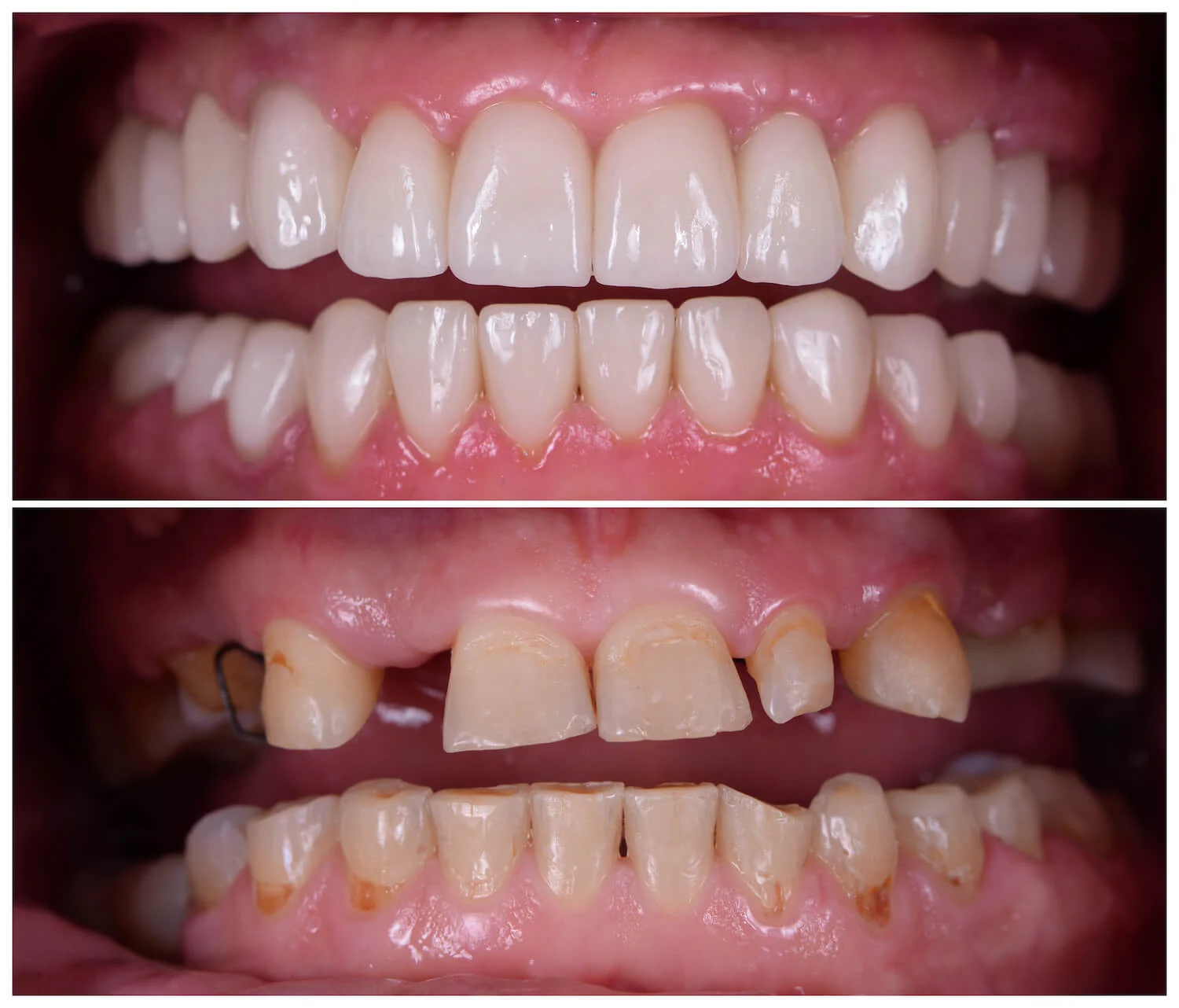
Recovery time after a full mouth rehabilitation can vary widely depending on the complexity of the case and the type of procedures involved. Some patients may recover within days, while others may need weeks or even months to fully heal—especially when surgical treatments like implants or gum surgeries are involved.
Recovery Varies by Procedure
- Minor Restorative Work:
Procedures like fillings, crowns, veneers, or bonding typically require no downtime—you can resume normal activity the same day. - Moderate Procedures:
Root canals or deep cleanings might cause mild discomfort or swelling for 1–3 days, but most patients return to normal routines quickly. - Surgical Procedures:
Treatments like dental implants, gum grafting, or full mouth extractions require a longer healing period, ranging from 1 week to several months, especially when bone healing or osseointegration (implant bonding) is needed.
General Healing Timeline
- First 24–72 hours:
Swelling and sensitivity are normal. A soft food diet, rest, and prescribed medications help ease this stage. - First 1–2 weeks:
Most soft tissues (like gums) begin to heal. Patients may transition back to firmer foods and normal speech habits. - First 3–6 months (if implants involved):
Osseointegration (bone healing around implants) takes time. Temporary prosthetics may be worn while the implants fully integrate.
Eating, Speaking, and Smiling After Treatment
- Eating:
After minor procedures, normal eating resumes in a day or two. For extractions or implants, patients may need to follow a soft-food diet for 1–2 weeks or more. - Speaking:
Slight speech changes may occur with new restorations or dentures, but these typically resolve within days to a few weeks. - Smiling:
Many patients see a noticeable aesthetic improvement almost immediately—especially with temporary restorations—boosting confidence during recovery.
Aftercare and Maintenance
- Oral Hygiene:
Gentle brushing and antiseptic mouth rinses are essential post-surgery. Avoid aggressive brushing or flossing near treated areas. - Check-ups:
Regular follow-ups ensure proper healing and allow the dentist to adjust bite or fit as needed. - Lifestyle Adjustments:
Patients may need to quit smoking, avoid alcohol, and adjust diet habits to promote healing—especially during implant recovery.
With good aftercare, most patients recover quickly and enjoy lasting results from their full mouth rehabilitation.
What Results Can You Expect from Full Mouth Rehabilitation?
Full mouth rehabilitation isn’t just a treatment—it’s a transformation. Whether you’re dealing with worn-down teeth, jaw pain, missing teeth, or aesthetic concerns, the results can dramatically improve your daily life, oral health, and self-confidence.
✅ Functional Improvements
- Better Chewing Ability:
With a restored bite and stable teeth, eating becomes easier and more enjoyable—no more avoiding hard or chewy foods. - Clearer Speech:
Missing or damaged teeth can affect speech. After rehabilitation, pronunciation often improves significantly. - Pain Relief:
TMJ issues, headaches, and jaw strain often reduce or disappear completely with proper bite correction and tooth alignment. - Restored Bite Balance:
A properly aligned occlusion distributes pressure evenly across teeth, reducing risk of future wear, cracks, or joint issues.
Aesthetic Transformation
- Brighter, Symmetrical Smile:
Whether through veneers, crowns, or implants, your new teeth will be designed to match the shape, color, and alignment of a healthy, youthful smile. - Improved Facial Structure:
Lost teeth and worn-down enamel can make the face look sunken or aged. Full mouth rehabilitation restores volume and symmetry, subtly lifting and rejuvenating your facial appearance. - Natural Look and Feel:
Advanced materials like zirconia, ceramic, and porcelain mimic the translucency and texture of real enamel—offering a highly realistic result.
Long-Term Durability
- Implants & Bridges:
With proper care, implants can last 15+ years, often for life. Bridges and crowns typically last 10–15 years depending on materials and oral hygiene. - Reduced Future Dental Work:
By addressing the entire mouth holistically, patients avoid the common cycle of constant small repairs and replacements. - Ease of Maintenance:
Once fully healed, your new smile can be maintained with standard hygiene practices and routine dental check-ups.
Psychological & Emotional Benefits
- Boosted Confidence:
A functional, beautiful smile makes you more comfortable in social and professional settings. - Reduced Dental Anxiety:
Many patients gain peace of mind knowing that the root of their issues has been resolved, not just patched temporarily. - Better Quality of Life:
Eating, smiling, speaking, and living without discomfort leads to a higher daily satisfaction and overall wellness.
Whether you’ve struggled with dental issues for years or recently experienced trauma or decay, the outcome of full mouth rehabilitation can be life-changing—restoring not only your teeth but your confidence and comfort.
What Are the Benefits of Full Mouth Dental Rehabilitation?
Full mouth dental rehabilitation offers far more than just a cosmetic upgrade—it’s a comprehensive solution that restores functionality, health, and overall well-being. For patients facing multiple dental issues, this treatment can be the key to regaining a pain-free, confident life.
Oral Health Benefits
- Restores Damaged or Missing Teeth:
Treats decay, fractures, wear, and gaps to bring the mouth back to optimal health. - Improves Bite Alignment:
Balances occlusion to reduce uneven wear and pressure that could lead to TMJ issues or broken teeth. - Addresses Gum Disease and Infections:
Deep cleanings, periodontal treatments, and restorations help manage or eliminate inflammation and disease. - Prevents Further Damage:
By stabilizing your teeth and bite, rehabilitation prevents escalating oral problems like shifting teeth or worsening enamel erosion.
️ Functional Improvements
- Easier Chewing and Digestion:
With a full, even set of teeth, patients can chew efficiently—leading to improved nutrition and less digestive stress. - Clearer Speech:
Replacing or repairing missing or misaligned teeth restores normal speech patterns, helping you speak with clarity and confidence. - Relieves Pain and Discomfort:
Chronic dental pain, TMJ discomfort, and muscle fatigue are often resolved by correcting bite and structural issues.
Aesthetic Advantages
- Smile Makeover Results:
Whiter, well-aligned, symmetrical teeth dramatically enhance your facial appearance and self-image. - Facial Support Restoration:
Dental implants and crowns can restore facial contours lost due to missing teeth, resulting in a more youthful appearance. - Customised for You:
The treatment is highly personalised, with shade, shape, and tooth arrangement designed to match your facial features and preferences.
Psychological & Emotional Benefits
- Increased Self-Confidence:
A healthy, attractive smile positively impacts social interactions and professional presence. - Reduced Dental Anxiety Moving Forward:
Knowing your mouth is stable and healthy eliminates the fear of ongoing dental problems. - Improved Mental Health:
Living without constant pain or embarrassment about your smile can have a powerful effect on your mood and quality of life.
Long-Term Investment Value
- Cost-Efficient in the Long Run:
Instead of repeatedly fixing individual issues, full mouth rehabilitation offers a durable, whole-mouth solution that reduces long-term costs. - Durability & Longevity:
High-quality materials and expert craftsmanship ensure long-lasting results with proper care. - Less Time in the Dental Chair Over Time:
Once complete, patients generally need only routine maintenance instead of constant treatments.
Full mouth rehabilitation doesn’t just change your smile—it changes your life.
What Are the Disadvantages or Complications of Full Mouth Rehabilitation?
While full mouth rehabilitation delivers transformative results, it’s important to consider the potential drawbacks, risks, and challenges. Knowing these upfront helps you make an informed decision and prepare for the process.
⚠️ Potential Risks and Complications
- Post-Treatment Discomfort:
Mild to moderate pain, swelling, or sensitivity may follow procedures like implants, extractions, or gum surgeries. These symptoms are usually temporary and manageable with medication. - Prosthesis Complications:
Crowns, bridges, or implants can occasionally loosen, fracture, or fail—especially if oral hygiene is poor or biting forces are unbalanced. - Gum Recession or Irritation:
In cases involving gum work or improperly placed restorations, gum irritation or recession may occur and require follow-up. - TMJ or Bite Issues:
If occlusion is not properly balanced during treatment, patients may experience jaw discomfort, headaches, or tooth wear. This is why bite analysis is critical during the planning phase.
Cost and Financial Commitment
- High Initial Cost:
Full mouth rehabilitation is one of the most complex dental procedures and often involves multiple specialties. It can cost several thousand to tens of thousands depending on treatment scope. - Multiple Appointments Required:
Planning, diagnostics, provisional work, and final placement mean several visits over weeks or months—sometimes longer if healing is needed between stages. - Insurance Limitations:
Not all procedures are covered by dental insurance, particularly cosmetic elements like veneers or whitening. Patients may need to consider financing options.
Time and Patience Required
- Extended Treatment Timeline:
Complex cases, especially those involving dental implants or gum/bone healing, can take 6–12 months to complete. - Adaptation Period:
After major reconstruction, patients may need time to adjust to changes in bite, speech, and chewing—especially if they’ve had missing or worn-down teeth for years. - Maintenance Demands:
Lifelong success depends on daily oral care and regular check-ups. Neglecting hygiene can compromise the longevity of restorations.
The Importance of a Skilled Clinic
- Experience Matters:
Because of the technical complexity, poor planning or execution can result in unsatisfactory outcomes. Choosing an experienced clinic with a multidisciplinary team is essential. - Communication is Key:
Misunderstandings about aesthetic preferences, bite changes, or pain management can occur. Regular communication with your dentist helps avoid surprises.
Despite these considerations, the benefits often outweigh the downsides for those who need comprehensive dental rehabilitation. Knowing what to expect allows for smoother treatment and better results.
Who Needs Full Mouth Rehabilitation?
Full mouth rehabilitation is not just for aesthetic improvement—it’s often essential for people facing widespread dental issues that affect their ability to chew, speak, and smile confidently. This type of treatment addresses multiple concerns at once and restores complete oral function.
Signs You May Be a Candidate
- Multiple Missing Teeth:
If you’re missing several teeth across the upper and lower arches, especially in a way that affects your bite or speech, full mouth rehabilitation can provide a unified solution. - Severe Tooth Wear:
Worn-down teeth from bruxism (teeth grinding), acid erosion, or years of neglect are common triggers for a full rehabilitation plan. - Chronic Jaw or Head Pain:
Pain from misaligned bites (malocclusion), temporomandibular joint (TMJ) disorders, or clenching may require occlusal correction as part of a full-mouth approach. - Broken, Cracked, or Failing Restorations:
Patients with failing dental work (such as cracked crowns or loose bridges) across multiple areas of the mouth may need a full-scale restoration instead of continuous piecemeal repairs. - Gum Disease or Bone Loss:
If you suffer from advanced periodontal disease, you may need combined gum therapy and restorative care to prevent tooth loss and stabilize your mouth. - Dental Trauma:
Accidents causing widespread damage to teeth or the jaw often require a complete reconstruction to restore both function and aesthetics.
⚕️ Conditions That Often Require Full Rehabilitation
- Bruxism (teeth grinding)
- Gastroesophageal reflux disease (GERD)
- Bulimia-related enamel erosion
- Congenital disorders affecting tooth development
- Long-term neglect of oral health
- Failed multiple dental restorations
♂️ Who Is NOT a Good Candidate?
- Poor Oral Hygiene Habits:
Patients who are unwilling to maintain good brushing, flossing, and regular check-ups may risk failure of restorations. - Uncontrolled Medical Conditions:
Conditions like uncontrolled diabetes, active cancer treatment, or immune disorders may delay or prevent safe treatment. - Smoking or Heavy Alcohol Use:
These habits can compromise healing and reduce the longevity of dental implants and prosthetics. - Unrealistic Expectations:
While results are transformative, they require commitment, time, and maintenance. Patients expecting overnight change or perfect results without follow-through may not be suitable candidates.
If any of the signs or conditions above resonate with you, a consultation with a specialist in full mouth rehabilitation can determine whether this treatment is the right solution for your needs.
What Is the Cost of Full Mouth Rehabilitation?

Full mouth rehabilitation is a highly personalised and often life-changing treatment—but it does come with a significant financial investment. Understanding the cost factors can help you plan accordingly and make informed decisions.
Factors That Influence the Cost
- Scope of Treatment:
The number of procedures required plays a huge role. A rehabilitation involving fillings and crowns will cost less than one with multiple implants, surgeries, and orthodontics. - Type of Procedures:
Implants, bridges, root canals, veneers, and periodontal treatments all come with different price points. The inclusion of cosmetic vs functional elements also affects pricing. - Material Choices:
Porcelain, zirconia, titanium, and composite materials each come with their own durability and aesthetic qualities—reflected in the final cost. - Technology Used:
Clinics that use advanced diagnostics like 3D imaging, digital smile design, or CAD/CAM technology may have higher fees, but also more precise outcomes. - Location of the Clinic:
Costs vary significantly depending on where you’re treated. Full mouth rehabilitation in central London or a major UK city will likely be more expensive than in smaller towns or abroad (e.g., Turkey ,Albania or Eastern Europe). - Experience of the Dentist:
Renowned prosthodontists or multidisciplinary teams with years of experience typically charge more, but their expertise often results in better, longer-lasting outcomes.
Example Price Ranges (UK and Abroad)
- UK Pricing Estimates:
- Full arch dental implants: £8,000–£15,000 per arch
- Full mouth (upper and lower): £16,000–£30,000+
- Crown and bridge rehab (non-implant): £8,000–£20,000
- Full cosmetic veneer makeover: £10,000–£25,000
- Turkey/Overseas Clinics:
- Full mouth dental implants: £5,000–£12,000
- Full cosmetic rehab: £4,000–£10,000
- Price ranges in Albania :
Full Arch Dental Implants (All-on-4 / All-on-6)
-
All-on-4 (per arch): €2,800 – €4,500
-
All-on-6 (per arch): €3,500 – €6,000
-
Full mouth (both arches): €6,000 – €10,000
Full Mouth with Crowns and Bridges (Non-Implant)
-
Zirconia or porcelain-fused-to-metal crowns (20+ teeth): €2,500 – €5,500
-
Bridge-based full mouth rehab (no implants): €3,000 – €6,000
Full Mouth Veneer Rehabilitation (Cosmetic)
-
Porcelain veneers (per tooth): €180 – €300
-
Composite veneers (per tooth): €100 – €150
-
Full smile design (16–20 teeth): €2,500 – €4,500
Additional Costs (if needed)
-
Tooth extraction (per tooth): €30 – €70
-
Bone graft (per site): €150 – €300
-
Gum treatment / deep cleaning (full mouth): €150 – €400
-
Temporary teeth or provisional prosthetics: Often included or €200–€500 per arch
-
Note: Always factor in travel, accommodation, and follow-up care when considering treatment abroad.
⚖️ Is the Investment Worth It?
- Long-Term Value:
Compared to temporary fixes or repeated single-tooth repairs, full mouth rehabilitation offers durability and fewer ongoing costs over time. - Functional Impact:
The ability to eat, speak, and smile confidently improves overall quality of life and health—something that’s hard to put a price on. - Psychological Benefits:
Patients often report improved mental health, confidence, and professional opportunities post-treatment. - Payment Plans and Financing:
Many UK clinics offer 0% or low-interest finance plans. Be sure to ask your provider about options to break down the total cost into manageable monthly payments.
How Long Does Full Mouth Rehabilitation Last?
One of the biggest concerns patients have after investing time and money into full mouth rehabilitation is: How long will it actually last? The answer depends on several factors, from the type of procedures performed to your personal habits and oral hygiene.
⏳ Expected Lifespan of Common Restorations
- Dental Implants:
When well-maintained, implants can last 15 to 25 years—and in many cases, even a lifetime. The crown or bridge attached to the implant may need replacement sooner due to normal wear. - Crowns and Bridges:
These typically last 10 to 15 years, depending on the materials used (zirconia, porcelain-fused-to-metal, etc.) and the patient’s bite forces or habits like grinding. - Veneers:
Porcelain veneers can last 10 to 15 years, while composite veneers may need replacing within 5 to 7 years. - Fillings and Onlays/Inlays:
Composite fillings usually last 5 to 7 years, while ceramic or gold inlays can last over 10 years with proper care. - Dentures (Implant-Supported or Conventional):
May need to be relined or replaced every 5 to 10 years, depending on wear, fit, and bone changes.
How Maintenance Affects Longevity
- Daily Oral Hygiene:
Brushing twice a day, flossing, and using antibacterial mouthwash can significantly extend the lifespan of your restorations. - Avoiding Harmful Habits:
Smoking, chewing on ice or pens, and bruxism (teeth grinding) can cause premature wear or failure. - Diet Matters Too:
Limit sugary, acidic foods and drinks to prevent damage to natural teeth and protect your restorations.
Importance of Routine Follow-Ups
- Regular Checkups (Every 6 Months):
These allow your dentist to monitor restorations, catch issues early, and clean areas you may miss. - Occlusal Guards or Splints:
Patients who grind or clench at night may be prescribed custom night guards to prevent damage. - Repolishing and Adjustments:
Cosmetic restorations like veneers and composites may need occasional buffing or reshaping to maintain appearance and comfort.
Summary
While not permanent, full mouth rehabilitation is a long-term solution when done properly and maintained well. Think of it like a full-body renovation—if you take care of the structure, it can serve you beautifully for decades.
What Are Full Mouth Implants Made Of?
Full mouth implants are the foundation of many comprehensive dental reconstructions. Understanding the materials they’re made from can help you make an informed choice based on longevity, aesthetics, biocompatibility, and cost.
Common Materials Used in Full Mouth Implants
- Titanium:
The most widely used material for dental implants.- Strong and lightweight
- Biocompatible: fuses with the jawbone through a process called osseointegration
- Long-term success rate over 95%
- Can last a lifetime with proper care
- Zirconia (Ceramic):
A metal-free alternative growing in popularity.- Highly aesthetic (white, tooth-colored)
- Biocompatible and hypoallergenic—ideal for metal-sensitive patients
- Still new in long-term studies compared to titanium
- Generally more expensive and less customizable
Materials for the Restorative Part (Crowns & Bridges)
Once the implant is placed into the jawbone, it needs to be topped with a crown, bridge, or denture. These restorations are made of:
- Porcelain-Fused-to-Metal (PFM):
Combines metal strength with porcelain aesthetics- Strong but may show a dark line near the gum over time
- Zirconia Crowns/Bridges:
- Highly durable and aesthetic
- Ideal for both front and back teeth in full arch restorations
- Can be monolithic (single piece) or layered for better appearance
- Acrylic (for Implant-Supported Dentures):
- More affordable and lightweight
- Often used in immediate or temporary prosthetics
- Less durable than porcelain or zirconia
- Composite Resin:
- Used occasionally for temporary restorations
- Not as durable or stain-resistant as ceramic options
⚖️ Pros and Cons Comparison
| Material | Pros | Cons |
| Titanium | Proven, strong, cost-effective | Grey color, not metal-free |
| Zirconia | Aesthetic, metal-free, biocompatible | Higher cost, newer tech |
| PFM Crowns | Affordable, strong | Aesthetic limitations |
| Zirconia Crowns | Durable, highly aesthetic | May chip if not designed properly |
| Acrylic | Lightweight, cheap | Less long-lasting |
| Composite | Affordable, easy to repair | Wears quickly, stains over time |
Choosing the Right Material
- Your choice may depend on:
- Aesthetic goals (front vs back teeth)
- Budget
- Allergies or sensitivities
- Dentist’s recommendation based on jawbone density, bite, and long-term goals
What Is the All-on-4 Technique in Full Mouth Reconstruction?
The All-on-4 technique is a game-changing solution for patients who are missing most or all of their teeth. It offers a stable, fixed full-arch restoration using just four strategically placed dental implants—dramatically reducing cost and recovery time.
How All-on-4 Works
- Four Implants Per Arch:
Two implants are placed vertically at the front of the jaw, while the other two are angled in the back to maximize bone contact and support. - Fixed Full-Arch Prosthesis:
A bridge or denture is securely attached to the implants—offering a permanent, non-removable solution. - No Bone Graft in Most Cases:
Because of the angled placement, the technique often avoids the need for bone grafts, even in cases of bone loss.
✔️ Benefits of All-on-4
- Immediate Function:
In many cases, a temporary set of teeth can be placed on the same day—“teeth in a day.” - Cost-Effective:
Fewer implants and surgeries reduce the overall cost compared to replacing each tooth individually. - Minimally Invasive:
Shorter treatment and healing time compared to traditional full arch implant procedures. - Restores Chewing Power and Smile Aesthetics:
Patients regain the ability to eat normally and smile confidently.
Limitations of All-on-4
- Not Removable by Patient:
The bridge is fixed in place. While this is an advantage for many, some may prefer the flexibility of removable dentures. - Not Ideal for Everyone:
Patients with severe gum disease, poor bone structure, or certain health conditions may not be good candidates. - May Feel Bulky at First:
Especially in upper arches where the prosthetic often covers the palate.
Alternatives to All-on-4
- All-on-6:
Uses six implants per arch for added stability, often recommended for patients with good bone volume or stronger chewing forces. - Implant-Retained Overdentures:
Removable but supported by implants for improved fit. - Traditional Full Arch Bridges:
May use 6–8 implants and require more bone, time, and cost—but offer a highly customized solution.
Can You Have All Teeth Removed and Dentures the Same Day?

Yes, it is possible to have all your teeth extracted and receive dentures on the same day — this approach is commonly referred to as “immediate dentures.” While it’s not suitable for everyone, it can be an excellent solution for restoring smile and function without the delay of healing before getting teeth.
What Are Immediate Dentures?
- Definition:
Immediate dentures are pre-made prosthetic teeth that are inserted right after tooth extraction. - Purpose:
They act as a temporary replacement, allowing you to leave the dental office with teeth the same day your natural teeth are removed. - Custom-Made in Advance:
Impressions are taken before the extraction date, and the dentures are fabricated to closely fit your gums post-surgery.
Pros of Same-Day Dentures
- No Toothless Period:
You won’t have to go weeks or months without teeth, which boosts self-confidence and appearance. - Helps Shape Healing Gums:
Dentures can serve as a bandage, helping to control swelling and bleeding and guide the shape of healing gum tissues. - Quick Return to Eating & Speaking:
Basic functionality is maintained almost immediately.
⚠️ Cons and Considerations
- Fit May Be Imperfect Initially:
As gums and bone heal, the shape of your mouth changes—meaning immediate dentures may become loose over time. - Adjustments Are Likely:
You’ll probably need several relines or even a new set of dentures once healing is complete. - May Not Be Ideal for Complex Cases:
In situations requiring extensive bone or soft tissue work, a delayed denture or implant-based solution might be better.
What About Implant Dentures the Same Day?
- Teeth in a Day:
In certain cases (like All-on-4 or All-on-6), you can have implants placed and temporary fixed teeth attached the same day. This offers more stability and avoids the limitations of removable dentures. - Not for Everyone:
Requires sufficient bone, good general health, and precise planning.
️ Eating and Speaking Post-Surgery
- Start with soft foods and avoid chewing near extraction sites
- Practice speaking slowly until you’re adjusted
- Follow your dentist’s care instructions closely to reduce swelling and infection risk
Does Full Mouth Rehabilitation Help Jaw Alignment and TMJ?
Yes, full mouth rehabilitation can significantly improve jaw alignment and relieve symptoms related to temporomandibular joint disorder (TMJ or TMD). One of the key objectives of this treatment is to restore a balanced bite (occlusion)—which plays a crucial role in the health of your jaw joints and facial muscles.
Understanding the Connection Between Bite and Jaw Pain
- Imbalanced Bite = Muscle Strain:
When your teeth don’t come together evenly, it can put undue stress on the muscles and joints in your jaw. - Chronic Tension = TMJ Symptoms:
Common TMJ issues include jaw clicking, headaches, facial pain, ear discomfort, and difficulty chewing. - Full Mouth Rehab Rebalances the System:
By restoring proper tooth height, alignment, and bite contact, the jaw can return to a more natural, pain-free position.
How Full Mouth Rehabilitation Addresses TMJ
- Bite Analysis and Occlusal Mapping:
During the planning stage, dentists assess your occlusion and how it impacts jaw function. This includes studying bite force, muscle activity, and TMJ motion. - Vertical Dimension of Occlusion (VDO):
Full mouth rehab often restores lost tooth structure, which increases the vertical space between upper and lower jaws—critical for proper joint positioning. - Customized Splints and Nightguards:
Used pre- or post-treatment to relieve pressure and protect restorations from bruxism (teeth grinding), which is a major cause of TMJ issues. - Procedures That Realign the Jaw:
- Crowns and bridges to re-establish height and harmony
- Orthodontics to move teeth into better positions
- Occlusal equilibration (adjusting tooth surfaces) to fine-tune the bite
✨ When TMJ Symptoms Improve
- Short-Term Relief:
Patients often feel reduced tension and pain even during the provisional (temporary) restoration phase. - Long-Term Improvement:
Once final restorations are complete and bite forces are evenly distributed, chronic TMJ symptoms often resolve or dramatically decrease.
Important Considerations
- Not all TMJ issues are dental-related—some stem from trauma or systemic disorders
- A full assessment is crucial before assuming bite correction alone will solve jaw pain
- Collaboration with specialists (e.g., neurologists, physiotherapists) may be recommended for complex cases
Frequently Asked Questions About Full Mouth Rehabilitation
What Does a Full Mouth Reconstruction Consist Of?
- A full mouth reconstruction is a comprehensive plan involving multiple dental procedures aimed at restoring the health, function, and aesthetics of your entire mouth.
- It typically includes crowns, veneers, dental implants, bridges, fillings, gum therapy, and sometimes orthodontic or jaw alignment procedures.
- The process begins with diagnostics like X-rays, 3D scans, and bite analysis, followed by a tailored treatment plan that may take several months to complete.
How Long Does It Take to Recover from Full Mouth Reconstruction?
- Recovery time varies based on the procedures involved. Minor work like crowns or fillings may require only a few days, while implants and surgeries could need several weeks or months.
- Healing involves both soft tissue recovery (gums, jaw) and adaptation to new bite alignment.
Pain, swelling, or discomfort is usually manageable with over-the-counter medications, and your dentist will guide you through each recovery phase.


